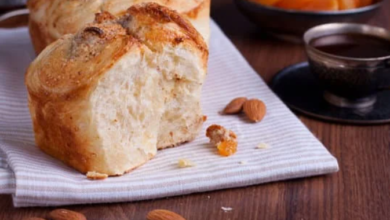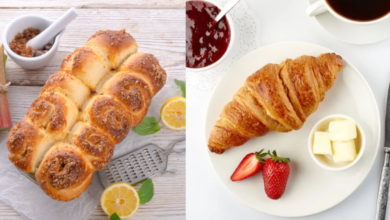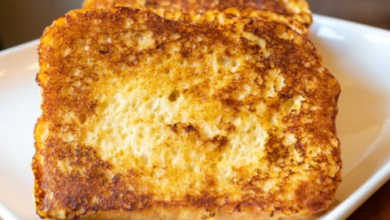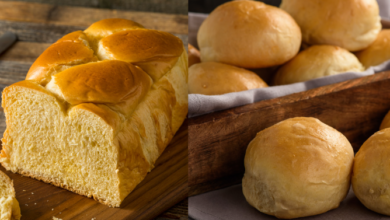Wondering What Temperature Is Brioche Done?

What To Know
- Under-baking brioche leaves the loaf with a doughy, undercooked center and a pale crust.
- Determining the ideal temperature at which brioche is done is essential for achieving the perfect loaf.
- Brioche has a higher butter and egg content, resulting in a richer flavor and a more tender crumb.
Brioche, the epitome of French pastry, is renowned for its tender crumb, golden-brown crust, and rich flavor. Mastering the art of baking brioche requires precision, and one crucial aspect is determining the perfect internal temperature. Understanding the optimal temperature at which brioche is done ensures a perfectly baked loaf every time.
Measuring Brioche’s Internal Temperature
To accurately measure the internal temperature of brioche, use an instant-read thermometer. Insert the thermometer into the center of the loaf, avoiding the crust. The ideal internal temperature for brioche is:
190-195°F (88-91°C)
Signs of a Perfectly Baked Brioche
In addition to the internal temperature, there are other visual and tactile cues that indicate a perfectly baked brioche:
- Golden-Brown Crust: The crust should be evenly browned, with a slightly crispy texture.
- Tender Crumb: When you gently press the loaf, it should spring back and feel soft and airy.
- Pull-Apart Texture: Brioche is known for its pull-apart texture, which is achieved when the bread is baked to the correct temperature.
Consequences of Over- or Under-Baking Brioche
- Over-Baking: Over-baking brioche can result in a dry, crumbly crumb and a tough crust.
- Under-Baking: Under-baking brioche leaves the loaf with a doughy, undercooked center and a pale crust.
Tips for Achieving the Perfect Temperature
- Use a calibrated thermometer: Ensure your thermometer is accurate to obtain reliable readings.
- Check the temperature at multiple points: Insert the thermometer into different areas of the loaf to get an average temperature.
- Bake at the correct temperature: Follow the recipe’s recommended baking temperature and time.
- Monitor the brioche closely: Pay attention to the loaf’s appearance and texture to detect any signs of over- or under-baking.
Troubleshooting Common Temperature Issues
- Why is my brioche too dry? It could be over-baked. Check the internal temperature and reduce the baking time or temperature in future batches.
- Why is my brioche doughy in the center? It is likely under-baked. Increase the baking time or temperature slightly.
- Why does my brioche crust burn easily? The oven temperature may be too high. Reduce the temperature or use a baking sheet to shield the loaf from direct heat.
Wrapping Up
Determining the ideal temperature at which brioche is done is essential for achieving the perfect loaf. By following the guidelines outlined in this guide, you can consistently bake brioche that is tender, flavorful, and visually stunning. Remember, patience and precision are key to mastering this culinary delight.
Top Questions Asked
1. What is the recommended internal temperature for brioche?
190-195°F (88-91°C)
2. How do I check the temperature of brioche?
Use an instant-read thermometer inserted into the center of the loaf.
3. What happens if I over-bake brioche?
It will become dry and crumbly.
4. What happens if I under-bake brioche?
It will have a doughy center and a pale crust.
5. Why is my brioche crust burning?
The oven temperature may be too high.
6. What is the best way to store brioche?
Store it in an airtight container at room temperature for up to 3 days.
7. Can I freeze brioche?
Yes, freeze it for up to 3 months.
8. How do I reheat brioche?
Reheat it in a preheated oven at 350°F (175°C) for 10-15 minutes.
9. What can I do with leftover brioche?
Use it to make French toast, bread pudding, or croutons.
10. What is the difference between brioche and challah?
Brioche has a higher butter and egg content, resulting in a richer flavor and a more tender crumb.





